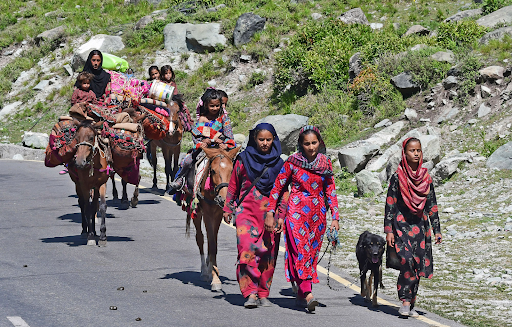Looking for a Kashmir Package Tour to explore the natural beauty with all popular attractions, then visiting in the spring season is ideal. During this time, visitors explore the Botanical Garden of Kashmir, but few realize the parallel existence of Kashmir’s Nomadic Tribes.
These tribes have been residing in Kashmir for centuries. Wait, do you know about Kashmiri Tribes? Come on, let’s explore these fascinating communities, their lifestyle, culture, and challenges.
Exploring Kashmiri Tribes: Daily Lives & Challenges
1. An Overview of Kashmir’s Nomadic Tribes?
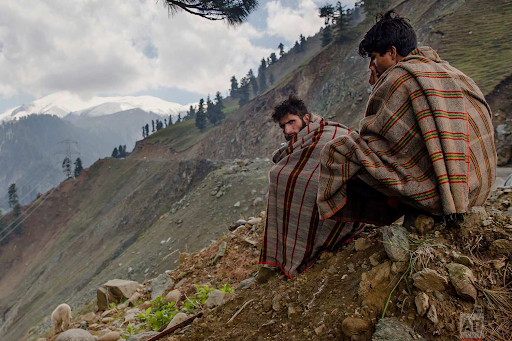
From the centuries, Gujjars, Bakarwals, and Changpas have been the main Nomadic Tribes of Kashmir.
Gujjars are primarily involved in the herding of animals such as cows and buffalos. While the Bakarwals are the community that herds sheep and goats.
On the other hand, Changpas are those who are known for their yak herding, they reside mostly in the higher altitudes region of Kashmir.
These tribes and their traditional knowledge of animal husbandry, and way of life are the real essence of Kashmir.
2. How’s the Daily Lives of Kashmir’s Nomadic Tribes
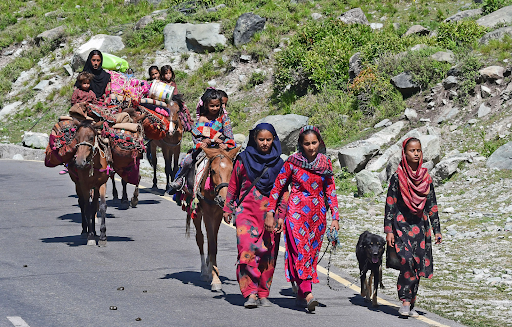
The lives of all 3 main Nomadic Tribes of Kashmir revolve around cattle, animal husbandry, and herding and rearing of animals.
These animals are the central source of their economic, social, and cultural life.
These tribes are also famous for their migratory life. During the summer season, these tribes move to higher altitudes along with their herds to take advantage of upper grasslands.
While in winter, they come back to lower altitudes to avoid severe weather. And this cycle of migration goes all year round.
This ensures that the grasslands are not overgrazed and remain sustainable.
Apart from that, these tribes have always been involved in the barter system. They exchange their produce like milk, dairy products, wool, handicrafts, and other goods for livelihood.
For instance, the Bakarwals exchange their wool and wool products with other communities in exchange for essential things.
This interdependence between nomadic tribes and settled populations is really important for their survival.
Despite their traditional way of living, these tribes face various challenges like the fluctuating market price of their products and limited access to modern facilities and education.
3. Challenges of Kashmir’s Nomadic Tribes
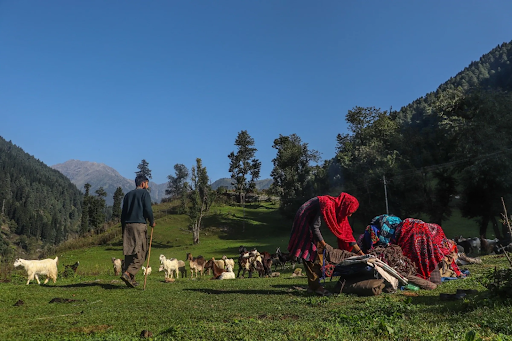
As these tribes have limited resources and limited access to all those modern facilities, they face a range of challenges, from environmental to socio-economic and political issues as well.
First of all, they live in high altitudes because of their livelihood purpose, and as a result, they have to face climate issues like heavy snowfalls, unpredictable rain, and many more.
Moreover, this sudden climate change sometimes leads to the loss of their cattle and even their lives.
Apart from that, they have limited access to essential things such as education and even healthcare facilities.
However, because of significant developments, many nomadic children are able to attend schools. But due to migratory life, it impact their regular schools and opportunities.
There are fewer healthcare facilities and centres in these remote areas, which leads to poor health conditions.
Now, talking about the political issues, this is the main issue nowadays which needs to be sorted out as soon as possible.
When the government develops these remote areas for tourism and other purposes, these tribes are displaced.
The lack of clear policies regarding their land is the main cause of this.
These were a few challenges faced by the nomadic tribes of Kashmir. There’s another major challenge that is targeting these tribes—Modernization.
4. Impacts of Modernization and Increased Tourism
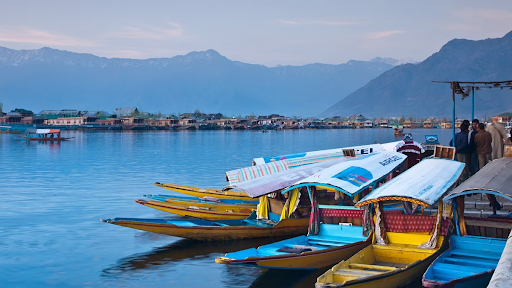
Modernization and Tourism both have positive and negative impacts on many things.
Same with the Kashmiri Tribes, increased tourism has led to infrastructure development, resulting in provided facilities in terms of education and healthcare.
Also, the fall of tourists has increased the demand for traditional handicrafts and local products, which led to a good source of income.
Now, let’s discuss the negative impacts. The influx of tourists threatens the traditional lifestyle and culture.
With increased environmental degradation, overuse of natural resources, and exposure to modern lifestyle, their traditional way of living is vanishing slowly.
So, maintaining to good balance between tourism and tradition is really important. It requires an approach that involves respecting nomad’s rights, and ensuring that they sustainably benefit from tourism.
5. Few Sustainable Tourism Practices for Tourists
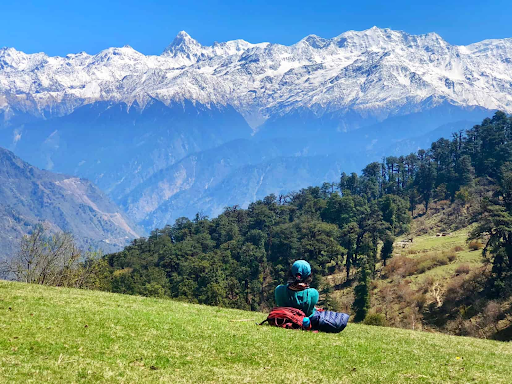
Eco-friendly tourism practices, such as minimizing waste and conserving natural resources, should be the priority of any tourist.
Community-based tourism, where tourists are managed by the community itself, ensures that they are directly benefiting from the tourism.
Tourists can also play a role by choosing responsible travel options, such as staying in eco-friendly accommodations and purchasing products directly from locals.
In this way, we can help Kashmir’s nomadic tribes to maintain their authenticity and unique livelihood.
Conclusion:
Understanding and appreciating these tribes of Kashmir is really important. As tourism continues to grow in Kashmir, it is essential to adopt practices that respect and benefit these communities, ensuring that they can thrive while maintaining their traditional lifestyles.
